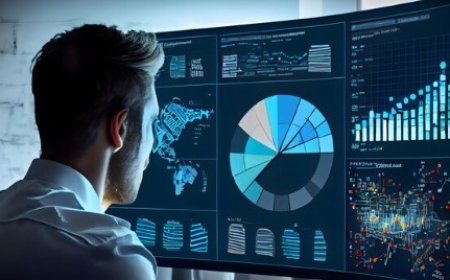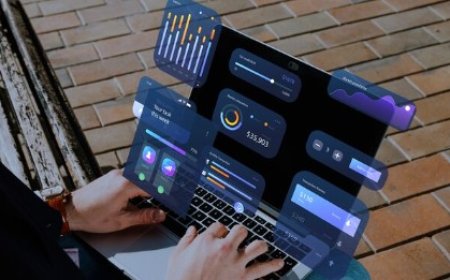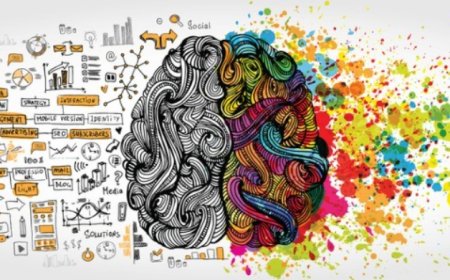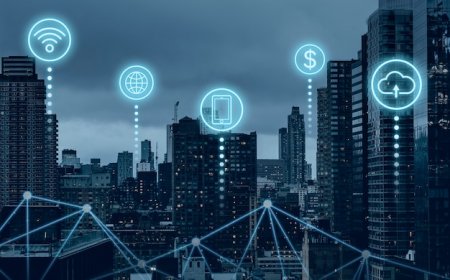How Does the Internet of Things Work?
How the Internet of Things works: explore IoT devices, connectivity, data exchange, sensors, applications, and security measures
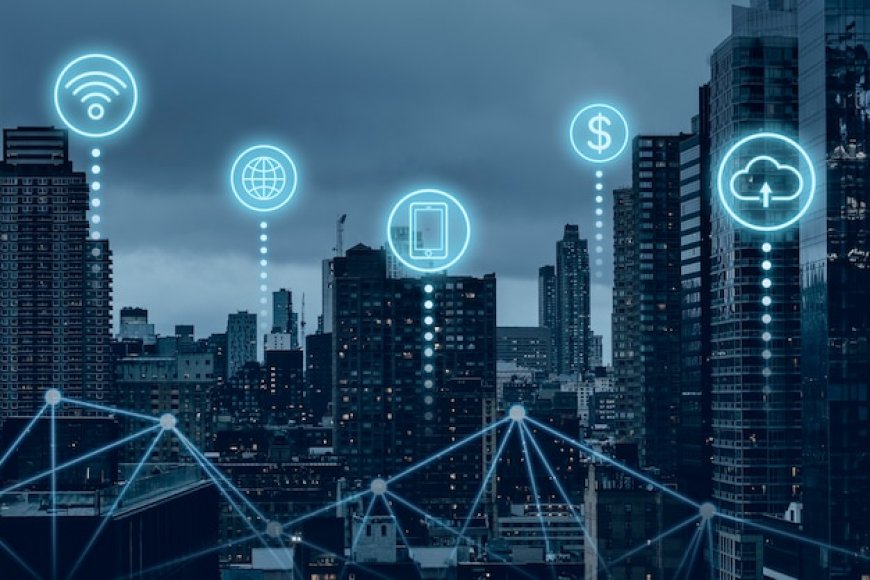
IoT, short for Internet of Things, refers to the network of interconnected devices that communicate and exchange data over the Internet without requiring human intervention. These devices can range from everyday objects like smart thermostats and wearable fitness trackers to industrial machines and vehicles equipped with sensors.
The importance of IoT in modern technology cannot be overstated. It has revolutionized how we interact with our surroundings, making our lives more convenient, efficient, and interconnected. IoT enables automation, real-time monitoring, and data-driven decision-making across various sectors such as healthcare, agriculture, transportation, and manufacturing.
Components of IoT
A. Sensors:
Sensors in IoT devices collect data from the environment or the device itself. This data can include information about temperature, humidity, movement, or any other relevant parameter. Sensors enable IoT devices to perceive and interact with their surroundings. Sensors used in IoT devices vary depending on their purpose. Common types include
-
temperature sensors,
-
motion sensors,
-
light sensors, and
-
pressure sensors.
B. Connectivity:
-
Wi-Fi: IoT devices can connect to the internet and communicate with each other using Wi-Fi networks, which offer high-speed data transmission over short distances.
-
Bluetooth: Bluetooth technology allows IoT devices to establish short-range wireless connections with other devices, such as smartphones or other IoT gadgets, for data exchange and control.
-
Cellular networks: IoT devices can utilize cellular networks like 4G or 5G to connect to the internet and transmit data over long distances, making them suitable for remote or mobile applications.
-
RFID (Radio Frequency Identification): RFID enables IoT devices to wirelessly identify and track objects using radio waves, facilitating inventory management, asset tracking, and contactless payment systems.
C. Data Processing:
-
Edge computing: In edge computing, data processing occurs near the source of data generation, within the IoT device, or a nearby gateway. This reduces latency and bandwidth usage by processing data locally before sending it to the cloud.
-
Cloud computing: Cloud computing involves storing and processing IoT data on remote servers accessible over the internet. It provides scalability, flexibility, and advanced analytics capabilities for handling large volumes of IoT data.
-
Data analytics: Techniques are used to examine the huge quantities of information collected by IoT devices, deriving relevant insights to optimize operations, make better decisions, and improve user experiences.
Working Principles of IoT
A. Data Collection
Sensors placed in IoT devices gather data from the environment, such as temperature, humidity, light, motion, or other parameters relevant to their purpose. These sensors can be simple or complex, depending on the specific application.
Once the data is collected, it is transmitted through the chosen connectivity method, which could be wired or wireless. Wired connections may include Ethernet or serial communication, while wireless options include Wi-Fi, Bluetooth, Zigbee, cellular networks, or satellite communication. The choice of connectivity method depends on factors like range, data rate, power consumption, and deployment environment.
B. Data Processing:
Edge computing involves processing data locally on the device itself or a nearby gateway device. This approach enables real-time processing and decision-making, reducing latency and reliance on constant internet connectivity. Edge computing is particularly useful for time-sensitive applications or scenarios where bandwidth is limited.
Cloud computing comes into play for storing and analyzing the vast amount of data generated by IoT devices. Cloud platforms offer scalability, computational resources, and advanced analytics tools for processing large datasets. Cloud-based analytics can uncover insights, trends, and correlations that may not be immediately apparent, helping organizations make informed decisions and optimize operations.
Applications of IoT
A. Smart Home:
IoT enables the automation and remote control of various devices and systems within homes, such as lighting, heating, security cameras, and appliances. Smart home devices can be controlled via smartphones or voice commands, offering convenience, energy efficiency, and security to homeowners.
B. Industrial IoT (IIoT):
In industries, IoT technology is used for monitoring and optimizing processes, predictive maintenance, asset tracking, and enhancing worker safety. IIoT systems integrate sensors, actuators, and other devices with industrial machinery and software to improve efficiency, reduce downtime, and enable data-driven decision-making.
C. Healthcare:
IoT devices are employed in healthcare for remote patient monitoring, wearable health trackers, smart medical devices, and telemedicine solutions. These technologies enable continuous monitoring of vital signs, medication adherence tracking, personalized treatment plans, and early detection of health issues.
D. Agriculture:
IoT solutions in agriculture include precision farming, soil monitoring, crop health monitoring, automated irrigation systems, and livestock tracking. These technologies help farmers optimize resource usage, improve crop yields, reduce water consumption, and enhance overall farm productivity.
E. Transportation:
IoT is used in transportation for vehicle tracking, fleet management, predictive maintenance, traffic management, and smart infrastructure. Connected vehicles and smart transportation systems improve safety, efficiency, and sustainability in urban and rural areas.
F. Retail:
In retail, IoT applications include inventory management, smart shelves, customer analytics, personalized shopping experiences, and supply chain optimization. IoT technology enables retailers to streamline operations, enhance customer engagement, and improve overall business performance.
G. Environmental Monitoring:
IoT devices are deployed for monitoring air quality, water quality, pollution levels, weather conditions, and natural disasters. These systems provide real-time data for environmental management, disaster response, and climate change research, helping to protect ecosystems and human health.
Challenges and Future Trends
In the IoT world, security and device compatibility are major challenges. With countless devices linked, hackers pose a threat. To combat this, we enhance security by encrypting data and updating software regularly. Also, ensuring devices from different makers can communicate seamlessly is tricky, akin to bridging diverse languages. Establishing common rules and systems is vital for smooth device integration and operation.
In the future, AI and IoT teaming up will open doors to exciting possibilities. Picture your devices not just gathering data, but also making decisions, like adjusting your home's temperature as you head back from work. Edge computing, too, is gaining attention, doing heavy data work closer to where it's collected, speeding things up, and keeping you informed. Then there's blockchain, the tech behind cryptocurrencies, which could beef up security for IoT networks, ensuring your data stays protected and transactions are transparent. With these advances, the IoT is on track to become even smarter, making our lives better in ways we haven't even thought of yet.
In conclusion, we've explored the key aspects of IoT, highlighting its significance and potential impact on our lives. We discussed challenges like security and interoperability, as well as exciting advancements such as AI integration, edge computing, and blockchain technology. IoT's ability to connect devices, collect data, and make intelligent decisions has immense importance in shaping the future, from improving efficiency in industries to enhancing convenience in our daily lives. As we move forward, it's crucial to continue exploring and innovating in the field of IoT, unlocking new possibilities, and addressing emerging challenges. By fostering collaboration and embracing creativity, we can harness the full potential of the IoT to create a smarter, more connected, and more sustainable world for generations to come.
